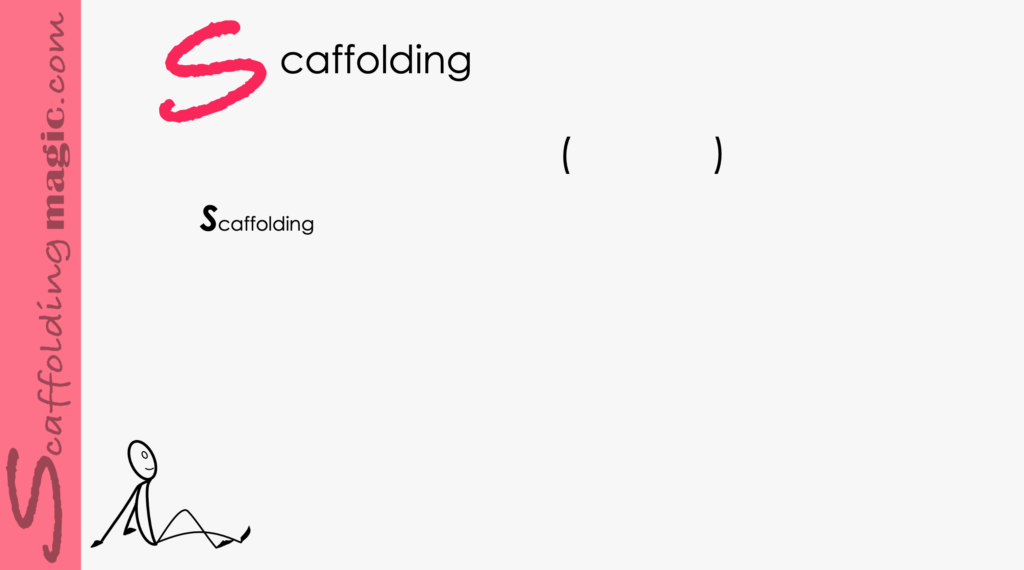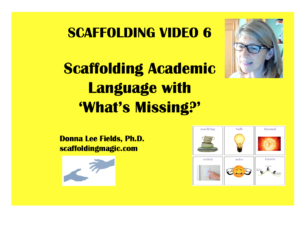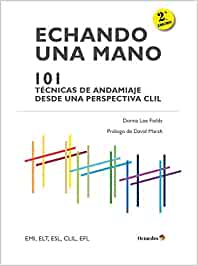You caught a beauty!!!
Download PDF of scaffold here.
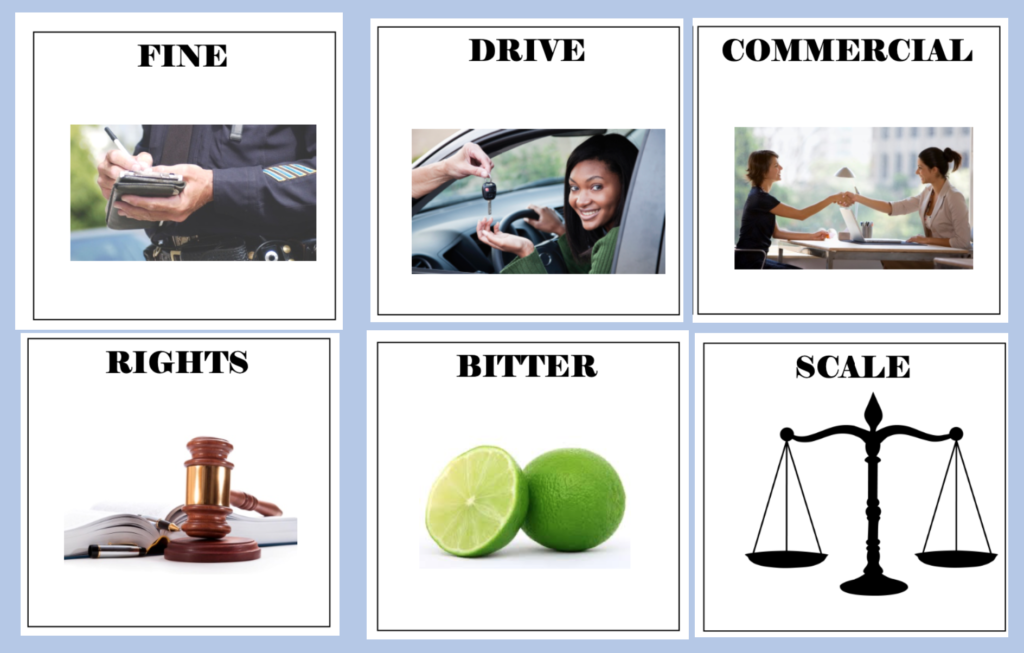

Download PDF of scaffold here.
theory behind scaffold…
‘Intelligence is not necessarily hereditary. Education can transform a child’ asserts Karl Witte*, a pioneer in blended learning. We have the tools, he says, to help our students to change the course of their academic and then professional lives, no matter the level of their abilities before they enter our classes. First we have to believe this concept (have high expectations), and then we need to be proactive in presenting the appropriate tools to our students. We fill our lessons with activities and techniques that will give them opportunities to build a solid foundation of knowledge upon which they construct their thinking. We identify and elucidate academic language before beginning a lesson, unit or project, and create exercises geared toward developing verbal, oral, and aural skills.
Academic language is so important that experts assert that the warehouse of words a person has stored away is directly connected to their quality of thinking: higher quality of words equals higher quality of thinking.** In this age of the Fourth Industrial Revolution, the quality of thinking our students reach in our classes, will be the difference between being qualified for jobs that technology is (still) not capable of performing, and watching the world from the sidelines.
While evidence shows that passive vocabulary programs work in the short-term – to pass exams or to understand a text in the moment – these programs are ineffective in the long-term and in raising overall comprehension. Our students need to interact with first-, second- and third-tier words,*** through activities that gently push the from basic to more sophisticated vocabulary and phrases.
This scaffold is one way of achieving this goal. You will be helping your students to feel more confident, to express themselves with more clarity, and to have more possibilities of achieving success in and out of school. Students learn concepts and definitions through interaction with images and text and high-level memorisation strategies. The example given here is from a lesson on Natural Science (energy). You’ll see how you can adapt it to any topic you’re about to introduce.
step by step…
- Choose 15-20 academic words, phrases or concepts from the chapter, unit, experiment, sport your students are about to begin. Place them in text boxes (see example below).
2. Choose images that correspond to each word/concept and place them above or below the words in the text boxes. (See example to the right and find template here.)
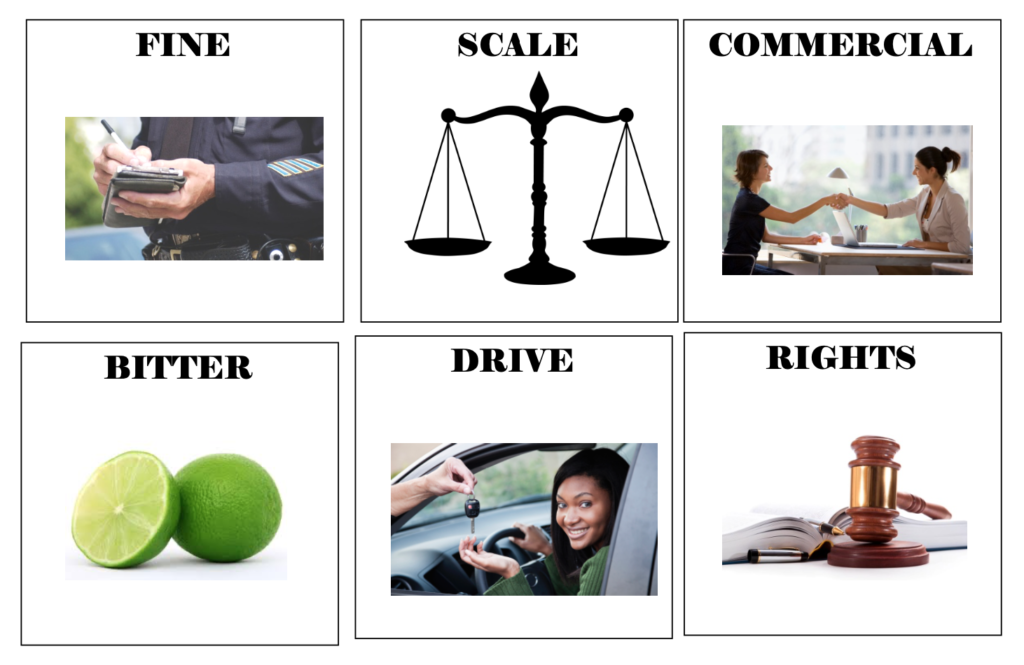
3. Create a table. In the first column, list the academic language you’ve chosen and that appears in the activity.
4. In the second column, include definitions of the academic terms. (See example to the right and find template here.)
4. In the third column, include sentences that further explain the meaning of the terms specifically in your subject area. (Recommended Collins COBUILD Dictionary for both sentence examples and definitions.)
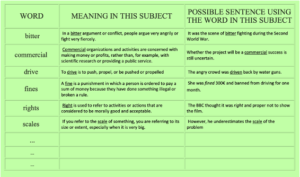
- Create a PPT of the table to be able to go over the terms more effectively with them after they’ve finished the activity.
- Make a set of text boxes (the ones you see in #2), cut them up individually, and give one set, plus a table, to each pair of students. (Students use the table to more effectively verbalise the terms in this activity.)
- Students interact with the text boxes and tables in the following way:
- Student ONE places six (6) text boxes face up on the desk.
- Student TWO has 10 seconds to study the information in the text boxes and then closes her/his eyes (or turns away).

- Student ONE removes one of the text boxes, mixes up the other five, and tells Student TWO to open her/his eyes (or turn back).
- Student TWO identifies the missing text box by:saying the word, term or phrase that is missing or by describing the image

- Student TWO then adds a text box from the pile, the pair continues the activity with the same dynamic (Student ONE turns away and Student TWO removes a text box).
- The activity continues until you are satisfied that the students have learnt the words/concepts thoroughly.
- Give students time to fill in the third column (‘Our definition of the term’.)
- Formative Assessment: Show PPT with text boxes, and pairs of students take turns identifying them linguistically, describing the images, and offering their definitions of the academic terms. Share standard definitions, which they include in their table, and be as enthusiastic as possible when comparing theirs with the ones you present from a standard source.
- Reflection: Students write 75-100 words on the dynamic of the activity and how they feel the activity will help them remember the academic language in the future.
*Witte, Karl (1914). The Education of Karl Witte: Or, The Training of the Child. New York, Thomas Y. Crowell Company.
**Zwiers, Jeff & Crawford, Marie (2011). Academic Conversations: Classroom Talk that Fosters Critical Thinking and Content Understandings, USA, Stenhouse Publishers.
***Beck, Isabel L. (2008). Creating Robust Vocabulary, New York, Guildford Publishing.
**** Recommended dictionary for sentence examples: Collins COBUILD dictionary
video explanation…
find more scaffolds here…


Scaffoldingmagic.com is your entryway into DYNAMIC bilingual learning methodologies, such as Phenomenon-Based Learning, CLIL, EMI, and ESL. You’ll find ways to implement critical thinking tools (DOK) to promote higher level thinking, the growth mindset, instill an ethic of excellence, deep reflection on learning, and all through multi-cultural, interdisciplinary activities. We have the keys to turning competences into action and to creating collective efficacy in your school so you move ahead as a unified, enthusiastic team.

